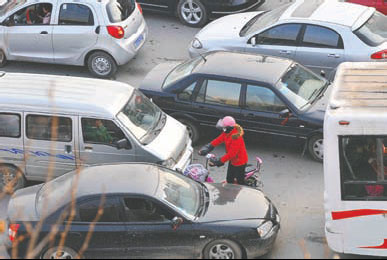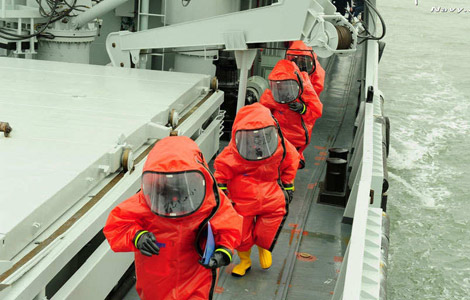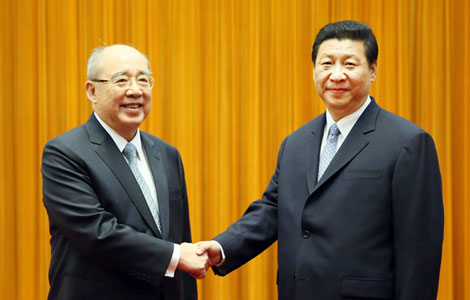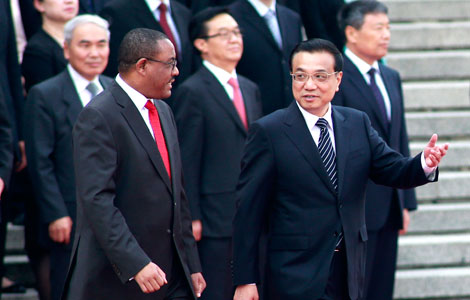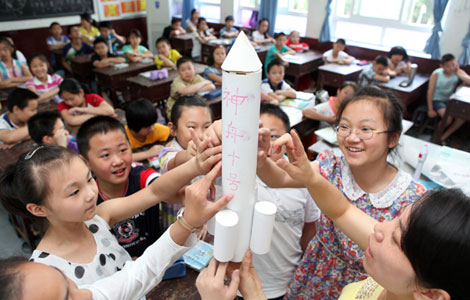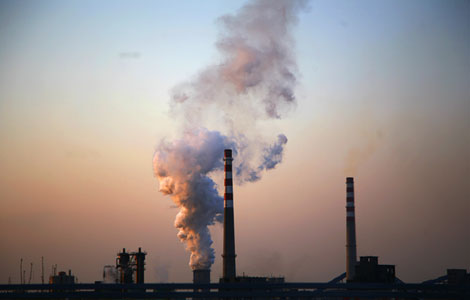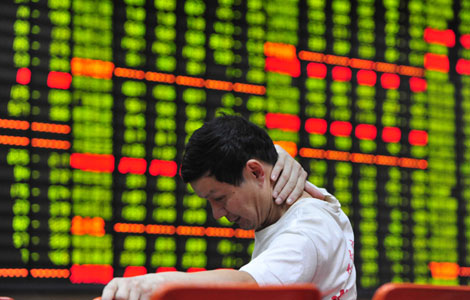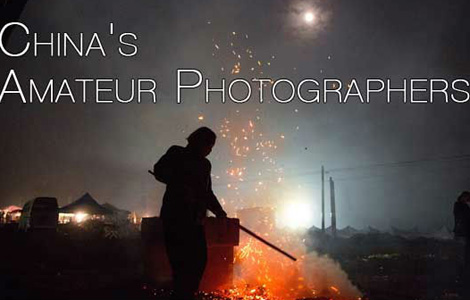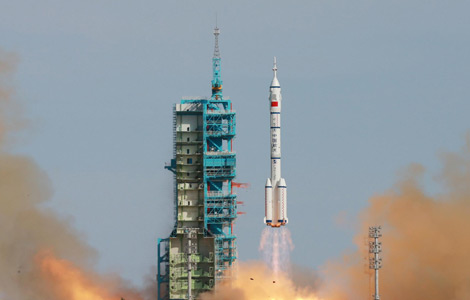Foundation aims to improve China's cityscapes
Updated: 2013-06-14 13:23
By Caroline Berg in New York (China Daily)
|
|||||||||
|
A bike-rider struggles to get through jammed cars in Qingzhou, Shandong province. Wang Jilin / for China Daily |
In Beijing, traffic jams can last all day and crossing a street often becomes an intricate game of dodge this and that moving obstacle.
One organization views these issues as symptoms of poor city planning, which is rampant across China, and it seeks to implement transportation systems that promote more sustainable urban development.
"Our goal is really helping Chinese cities figure out the best way to tackle land-use patterns, transportation systems and building design," said Jiang Lin, senior vice-president of the Energy Foundation.
Based in San Francisco, Jiang spent time in New York this week as a guest speaker for the National Committee on United States-China Relations to discuss some of the foundation's programs in China.
Although the foundation's primary role is as a grant maker, receiving financial support from a number of groups including the David and Lucile Packard, McKnight and William and Flora Hewlett foundations, it also participates in direct initiatives, such as its work with the Chinese government and local leaders to change city landscapes.
"Everything is exacerbated in China - the speed, the scale, the mass amount of urban construction that's happening at the same time," Jiang said. "It's really making the challenges much more visible than in any other country."
China is experiencing the largest human migration in history. Since the 1980s, about 300 million people have moved from the countryside to urban areas, and more than 350 million more are expected to move to China's cities in the next 15 years.
Jiang said the challenge for China, and for expanding cities worldwide, is to design a city's layout, particularly in terms of transportation systems and street networks, to accommodate mass urban migration while also reducing congestion and pollution.
One project the foundation has been working on and expanding in cities across China since 2005 is implementing "bus rapid transit" (BRT) systems. Originally developed in Brazil in the 1970s, the BRT system consists of dedicated bus lanes to allow bus service to operate efficiently without being held up in traffic congestion.
Jiang said BRT systems are less expensive than developing an underground metro system and can be equally as effective. This is particularly useful for cities where building an underground system is not feasible, such as the historic city of Xi'an, which has many ancient artifacts underground.
The foundation helped Beijing design its first BRT line in 2005, which runs from the center of the city to the south.
"Beijing is one of the worst examples of urban development," Jiang said. "The typical wide boulevard that you find in Beijing is impossible to cross. We joke about how it takes a 100-meter sprinter to make it through a traffic light."
Beijing adheres to a ring road - or beltway - system. The first ring road, which is actually known as the 2nd Ring Road, was built in the 1980s and expanded in the 1990s. Today, the 6th Ring Road is the most remote Beijing beltway.
Jiang said New York is a good model for other cities, including Beijing. It has created more public green spaces and plazas to revitalize neighborhoods. It also has built an extensive public transit system to cut down the need to own a car and reduce the city's carbon footprint.
Jiang said the first two things to consider when designing a city's layout is where people will walk and bike, thus requiring a mixed-use street plan.
Beijing's bike-lane system was great in the past, Jiang said, but drivers are not shy about entering the wide lanes, even though it creates more traffic problems.
"To us, getting people back on bicycles and creating safe environments for bikers is crucial in solving congestion problems," Jiang said. "China's cities are so big and dense that you've got to solve many problems before you can really clear the traffic. Using cars and building more roads are definitely not the solutions."
He said he believes people in China are becoming significantly more aware of sustainability issues. .
In his sixth year of the foundation's 15 years in China, Lin said he has seen greater investment in developing better public transit systems. However, the main challenge remains in the thoughtful planning of these networks.
"We hope once we're done in the cities, we will have created models for other cities to adopt," Jiang said.
carolineberg@chinadailyusa.com
(China Daily USA 06/14/2013 page10)
Most Viewed
Editor's Picks

|

|
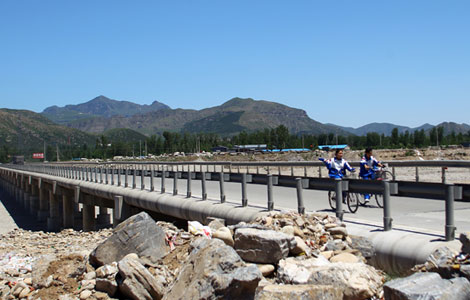
|

|
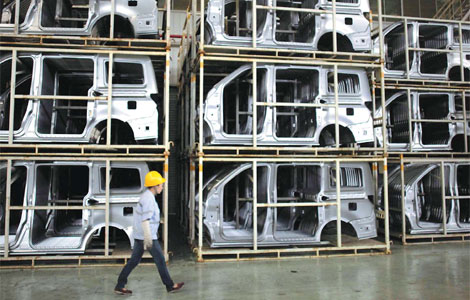
|
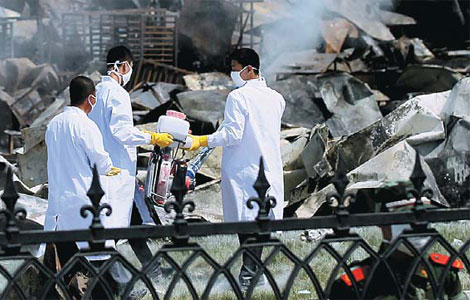
|
Today's Top News
Americans' confidence in Congress hits record low
Chinese brands in global marketplace set to grow
FBI chief defends surveillance programs
US to give Syrian rebels military aid
Cloudy skies for nation's foreign trade
EU files WTO dispute on steel measures
Abe's plot to contain China is doomed to fail
Nation's rise a common goal
US Weekly

|

|
